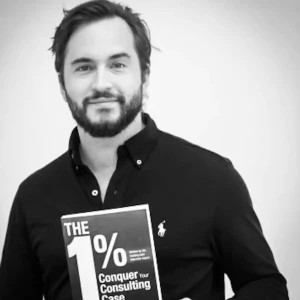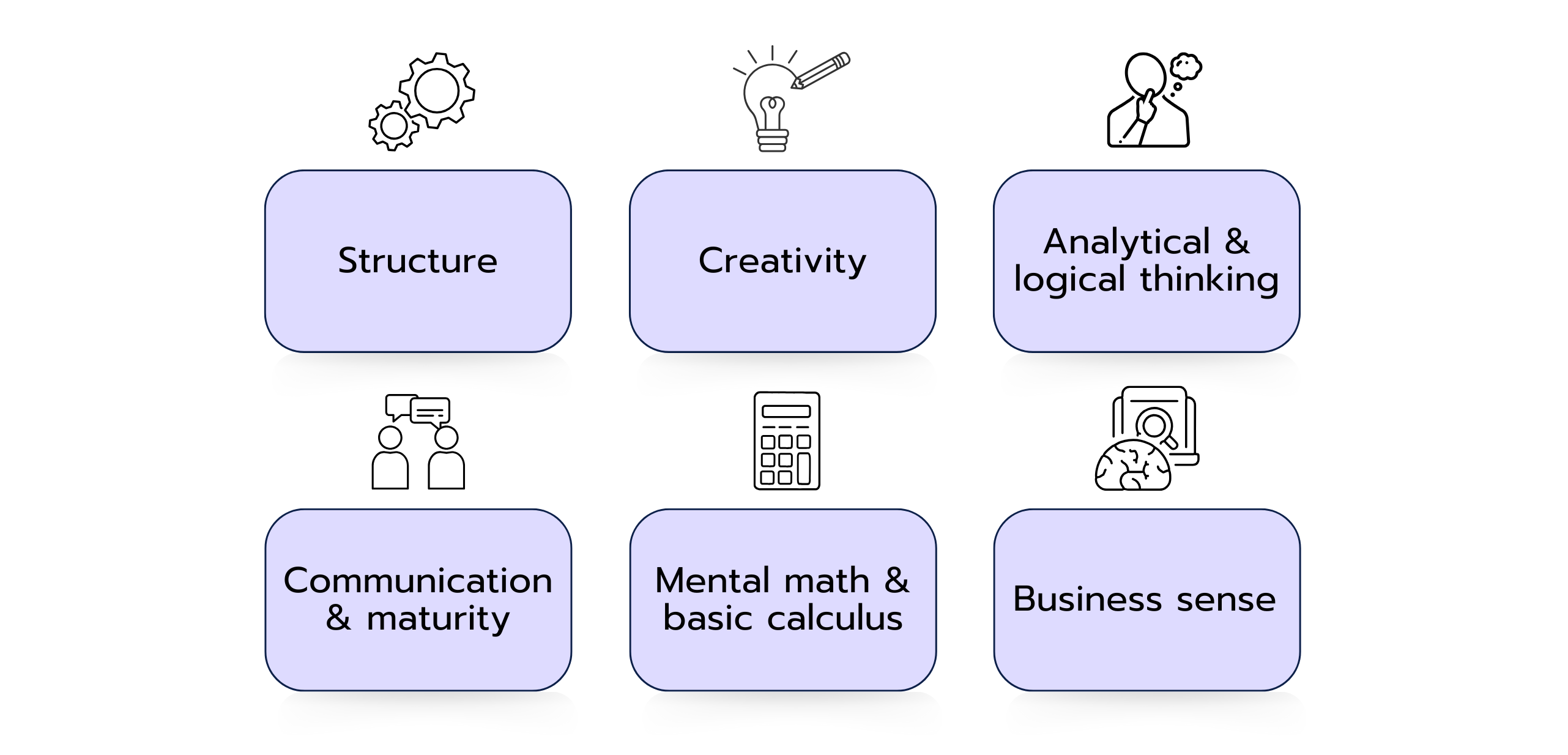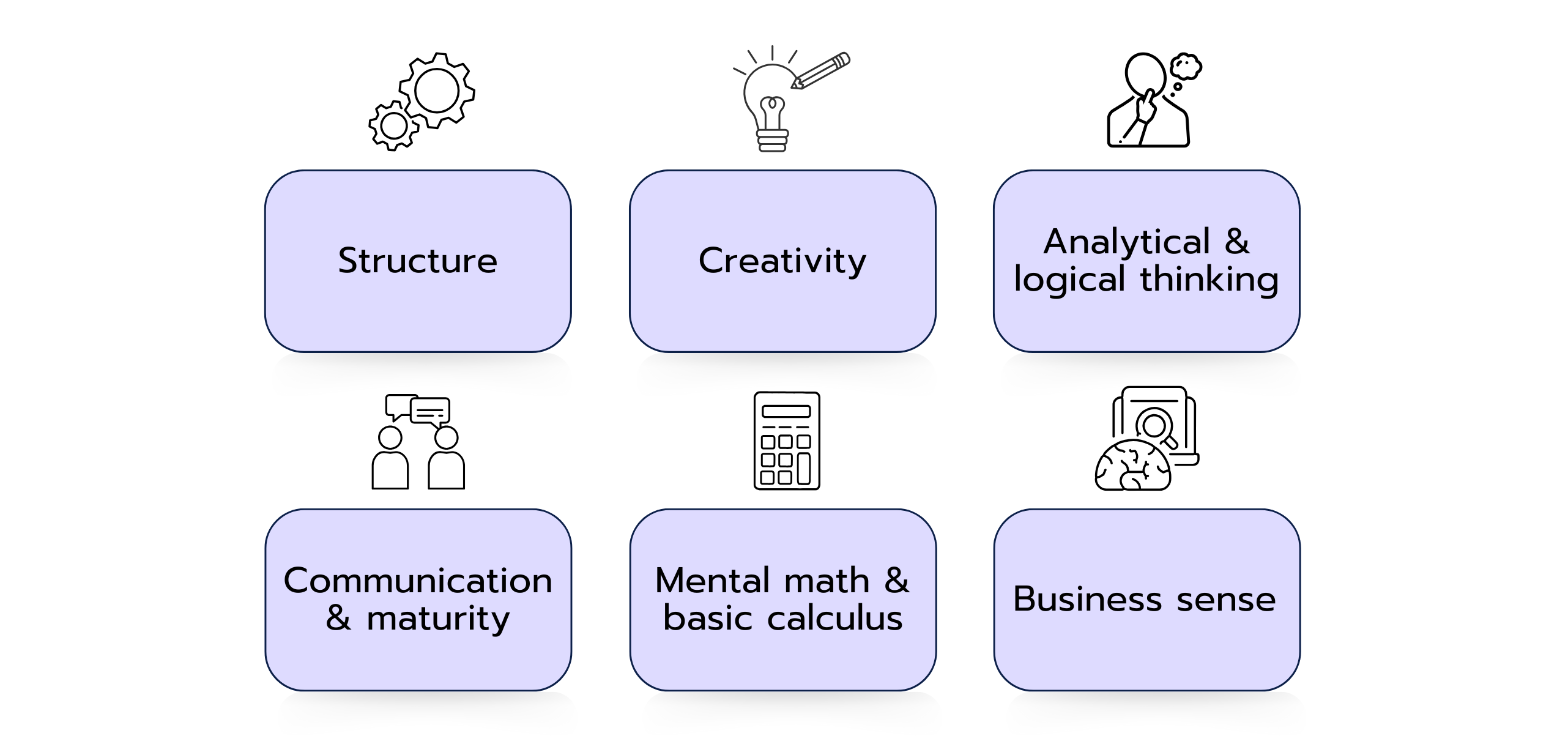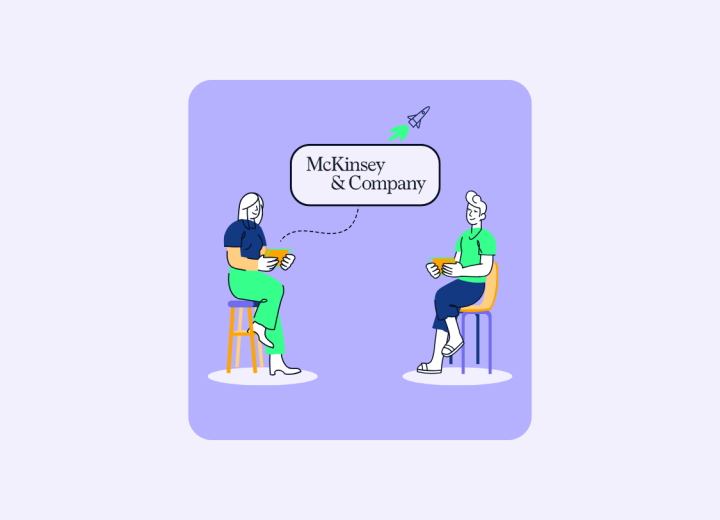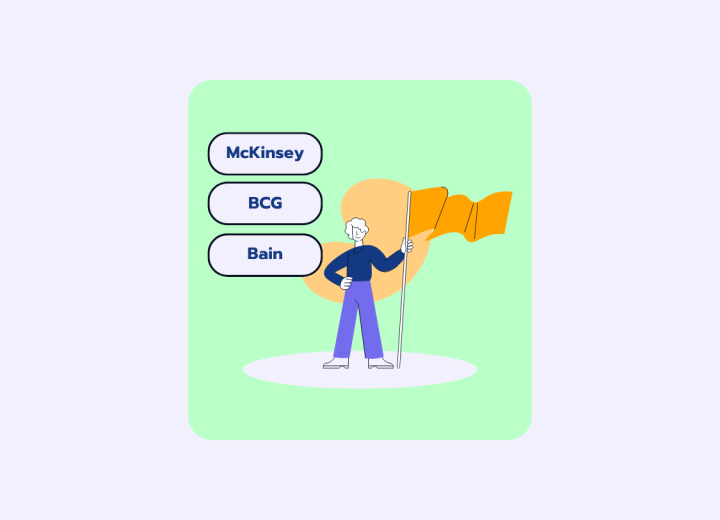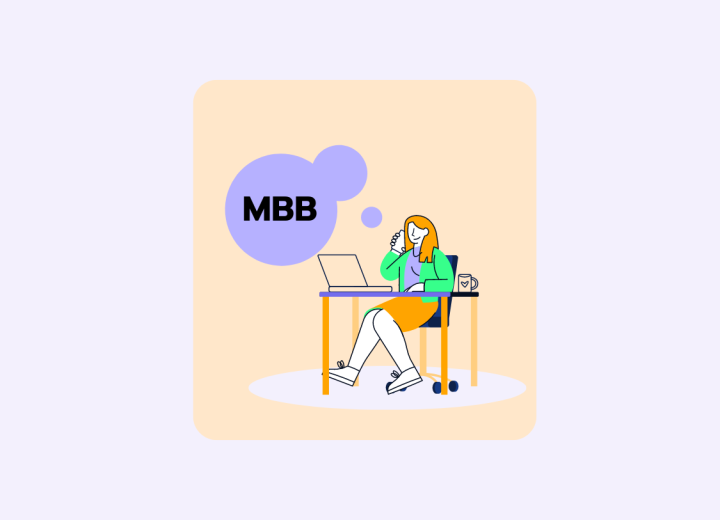While there are many similarities in McKinsey interviews and interviews with other firms, McKinsey interviews are interviewer-led, while other firms employ a candidate-led format.
Interviewer-led vs. Candidate-led Case Interview
McKinsey, BCG, Bain, and others’ cases have certain things in common:
- The individual elements of the cases are the same. You will have to structure problems, interpret exhibits, and work through some calculations, come up with hypotheses, recommendations, implications, next steps, etc.
- The skills that are assessed are the same. You need to exhibit strong problem-solving skills, creativity, ability to work under pressure, top-down communication, etc.
However, there is one key difference:
- In interviewer-led cases, you take ownership of every question and go into greater detail here, while the interviewer guides you from question to question. In the interviewee-led case, you drive the whole case to ask for the correct information to work with, analyze the problem to then deduct a recommendation in the end
In a McKinsey case, the interviewer will guide you through a series of connected questions that you need to answer, synthesize, and develop recommendations from, within each individual question. There are clear directions and a flow of questions, which you need to answer with a hypothesis-driven mindset (prioritization, implications, next steps). These are arguably easier to prepare for and to go through since the flow and types of questions will always be the same.
In a candidate-led case interview, due to the nature of your role as an investigator, it is much easier to get lost, walk down the wrong branch of the issue tree, and waste a ton of time. While the interviewers will try to influence you to move in the right direction (pay attention to their hints), it is still up to you what elements of the problem you would like to analyze first. Each answer should lead to a new question (hypothesis-driven) on your quest to find the root cause of the problem to come up with a recommendation on how to overcome it.
Structuring the Case
Another common misconception between McKinsey and other interviews relates to the structuring part of the case. The framework derived for McKinsey vs. a framework created for other consulting firms is usually quite different.
At the core, McKinsey wants to see creative ideas communicated in a structured manner, the more exhaustive the better.
Your goal should be to come up with a tailored and creative answer that fits the question. The framework should - broadly speaking - follow these three characteristics:
- broad
- deep
- insightful / creative
At the lowest level of your structure, you need to showcase concrete ideas, qualify your answer with practical examples and more details.
While for BCG, Bain, etc. you need to present your framework relatively swiftly within 1-3 minutes, to then dive deeper into the buckets where you think the solution of the case is buried, for McKinsey, there is no single solution (as discussed above).
In a McKinsey interview, you can take up to 5-8 minutes to present your structure, your qualification, and hypotheses. This is due to the interviewer-led format that McKinsey employs. The interviewer will only ask 'what else' if you
- haven't gone broad or deep enough
- did not explain your ideas well enough for them to stand out (again, you have time here)
The firm wants to see exhaustive and creative approaches to specific problems, which more often than not do not fit into the classic case interview frameworks that were en vogue 10 years ago...
Again, this only applies if everything you say
- adds value to the problem analysis
- is MECE
- is well qualified
- includes a detailed discussion of your hypotheses at the end
The difference in format and way of answering a question is the reason why I recommend preparing very differently for McKinsey interviews vs. other consultancies, which brings us to the last point.
